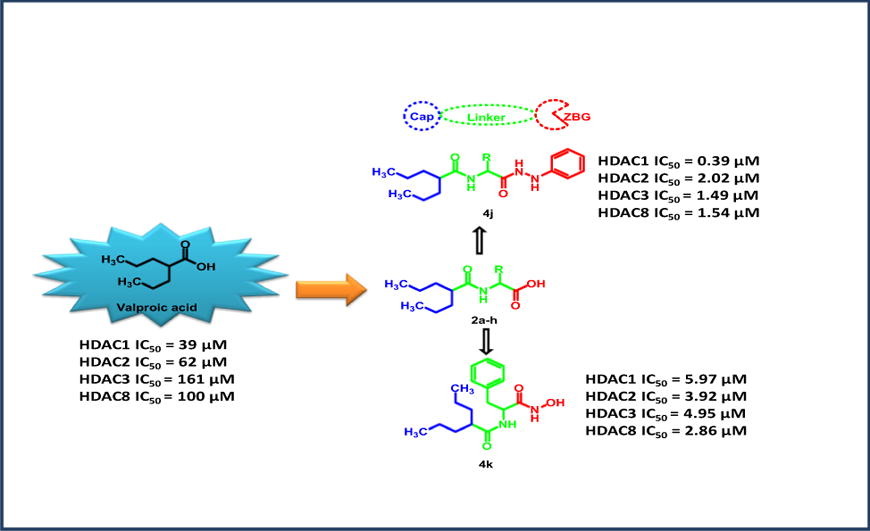
| Journal name |
Bioorganic Chemistry |
| Publication year |
2020 |
| Auther |
Tarek S.Ibrahima, Taghreed A.Sheha, Nader E.Abo-Dyab, Mohammed A.AlAwadh, Nabil A.Alhakamy, Zakaria K.Abdel-Samii, Siva S.Panda, Gamal El-Din A.Abuo-Rahma, Mamdouh F.A.Mohamed |
| Publication DOI or URL |
https://doi.org/10.1016/j.bioorg.2020.103797 |
Twenty-five valproic acid conjugates have been designed and synthesized. All target compounds were explored for their in vitro anti-proliferative activities using the MTT-based assay against four human cancer cell lines includingliver (HePG2), colon (HCT116), breast (MCF7) and cervical (HeLa) carcinoma cell lines. Out of six valproic acid-amino acid conjugates 2a-f. Only cysteine containing conjugate 2f showed the significant activity (IC50 9.10 µM against HePG2 and 6.81 µM against HCT116). However conjugate 2j showed broad-spectrum antitumor activity against all cell lines tested. In addition, conjugates 4j and 4k which contains phenyl hydrazide and hydroxamic acid group, respectively, also showed broad spectrum activity. Furthermore, six compounds were screened for HDAC 1-9 isozymes inhibitory activities. Compounds 2j, 4j and 4k manifested a higher inhibitory activity more than valproic acid but less than SAHA. In addition, the in vivo antitumor screening of 2j, 4j and 4k was done and the results have shown that 2j, 4j and 4k, particularly 4j, showed a significant decrease in tumor size and presented a considerable decrease in viable EAC count. Docking study of selectedcompound 4j revealed that it can bind nicely to the binding pocket of HDAC 1, 2, 3, 4 and HDAC 8. The results suggest that compounds 2j, 4j and 4k, particularly 4j, may be promising lead candidates for the development of novel targeted anti-tumor drug potentially via inhibiting HDACs.
